As this current lockdown progresses and the implications of the pandemic for our day to day life in the longer term become more apparent it is easy to become overwhelmed. As human beings we have a negativity bias which orients us to over-focus on threats and challenges and many of us may notice this in our day to day life. We might find ourselves watching the same bad news on the TV or listening to it on the radio repeatedly. We may find ourselves ruminating on upsetting things that have happened or worrying about what the future may bring.
The authentic pain of life is large for many of us at the moment – sickness, death, isolation, job losses, the stresses of being confined with the same few people – but this is 10% of the suffering. It is resisting the authentic pain that piles on the remaining 90% of the suffering – our thinking about the pain elaborates the authentic pain fuelled by emotions such as anger, denial and fear. This is confounded by our unrealistic and often unseen expectations such as ‘I need to be in control’, ‘there is something wrong with me’ or ‘it shouldn’t be like this’.
The 90% of the suffering is optional, but it does require us to feel the 10% of authentic pain. In order to turn towards and be with our authentic pain, without agenda, so as to not resist we can build up our resources. We can cultivate a habit of remaining cheerful which is what this blog is about.
Ten Tips for Remaining Cheerful
- Find meaning and purpose – a key strategy in remaining cheerful is to focus on the meaning and purpose of our lives. To get in touch with this we can spend a few moments when we wake each morning reflecting on our compassionate intention. Ask yourself, how can I relieve some of the 90% suffering in myself today? Allow the question to permeate your being and, without thinking about the question, see if a response emerges. It may not emerge immediately, but may emerge later in the day. One way to support yourself might be to do a mindfulness or compassion practice or to join one of our free daily sits at 7pm each evening and 10.30am each week day morning and be a part of our community of practice.
- Helping others – one way to remain cheerful is to actively find ways to be kind to those around us. We can practice the art of being a kindness warrior and take every opportunity that presents itself to do random acts of unconditional kindness. Set an intention for one a day and see what develops.
- Rejoicing in our compassionate motivation – if you are reading this blog, then most likely you have an intention to cultivate an atmosphere of mindfulness and compassion in your mind and in your life. So, appreciate yourself for having this motivation and the commitment to living with compassion. This is a wonderful aspiration so acknowledge it and rejoice in it!
- Being present – the 90% suffering happens when we are not present, when we are caught up in our ruminations and worries. Therefore, one way we can relieve some of the 90% is to be present throughout our day. Set a bell to go off on your phone regularly during the day, using an app such as Mindfulness Bell by Spotlight Six. When it chimes, become present and feel your feet on the ground, feel your breath, tune in to your heart centre and open to your whole experience. If a chime isn’t possible, then have the app on silent and respond to the phone’s vibration instead. Alternatively, you could become present in this way any time your phone indicates that you have received a text.
- Make challenges the path – when something challenging emerges in your life, think of it as part of your curriculum for the day. Rather than getting upset about it, see if it is possible to become curious about what is happening and what can be learned about the human condition from this experience. How could your learning from this experience go on to help those around you?
- Take in the good – follow the advice of our friend and author Rick Hanson. Be on the look out for the small wonderful experiences that are happening all the time during your day – the light reflecting off the frost, the clear night sky, the warmth of a cup of coffee or the smile or kind text from a friend. Set an intention to notice these things and some spend time enjoying them, using all of your senses and breathing the good into your heart and then breathing it out to share the goodness with others.
- Take a break – sometimes it can be good to do something that we can be completely absorbed in, that we enjoy and that takes us out of our ‘self’. These can be activities in which we experience a joyful flow, in which our sense of ego-centric self falls away. We may have a hobby that enables this, maybe an artistic, craft or sporting activity, listening to uplifting music, having a dance or watching a movie that we know will cheer us up.
- Depleting activities – make a list of things that you do in your day that deplete you and lower your mood or energy and see if you can do less of them. If you have to do them, then reflect on the meaning and purpose of the activity or make the activity a mindfulness or compassion practice. Do these activities as soon as you can so that you are not ruminating about having to do them for longer than you have to. Then when you have finished the activity, appreciate yourself for having completed it.
- Nurturing activities – make a list of activities that you do in your day that nourish you and raise your mood or energy and see if you can do more of them. Set an intention to really enjoy these activities, pay attention to doing them and take in the good (See point 6 above).
- Non-identification – you may be familiar with this from the last stage of the RAIN practice, but it makes a good daily life practice. When we are identified with our suffering, feeling that our suffering is who we are, we don’t have perspective – this is like holding your thumb up close to your eye. The thumb is all you can see, and it is not even in focus. Instead, sit back in posture and open up to the whole of your experience, and ask yourself ‘Is this suffering who I am? Or is it an experience which is moving through my awareness? This is like holding you thumb at arm’s length. You can see your thumb in focus, but you can also see most of the rest of your field of view as well.
I wish you luck with remaining cheerful. A glass half empty approach to life is a habit which will lead to unhappiness. Rob Nairn called this a poverty mentality. With practice we can change our habits. A good habit to cultivate is a glass half full approach to life, a habit of kindness, appreciation and general cheerfulness, which will lead to happiness. We can choose which habit to feed, day by day, but it will take practice.
I will be leading a session on this theme on Thursday evening, 28th January from 7-8pm, for all mindfulness association members, at the fortnightly membership sit. If you are not a member and would like to become one, click here for more information.
I wish you good cheer this week, and every week!
Kind Wishes
Heather
Heather and Jacky will be leading an online mindfulness weekend on 16-18 April, with a focus on mindful movement. This weekend will cover the curriculum of weekend 1 of the Level 1: Being Present course and can be attended as a stand alone weekend course or as a refresher for those who have already completed the Level 1 course.


